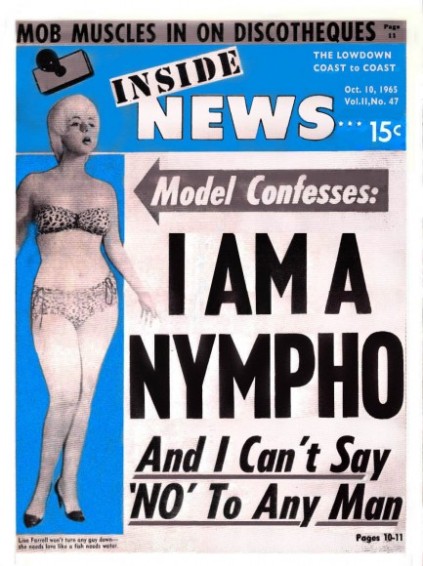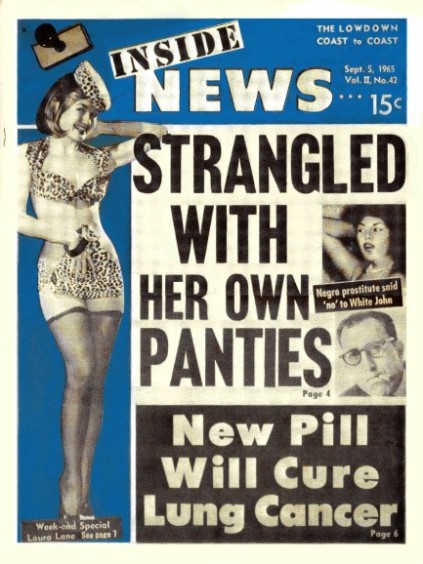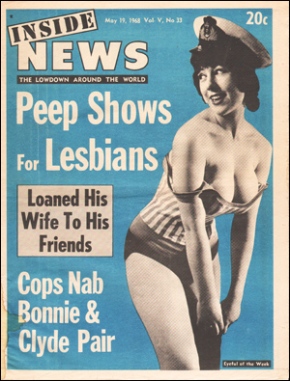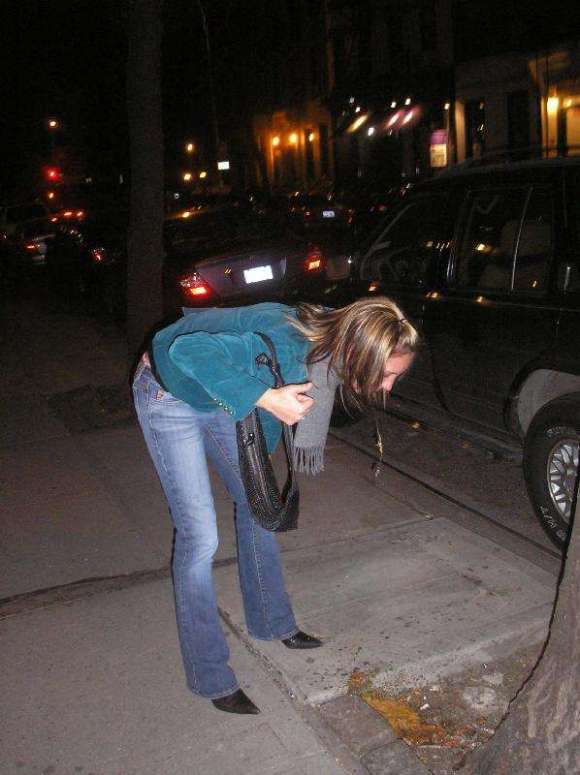Posted: November 8, 2012 | Author: Chus Martinez | Filed under: aesthetics, body art, Chus Martinez | Tags: acute art, art, bacterial art, body art, chronic art, chus martinez, Coeliac disease, Crohn's disease, E. coli, exudative art, hypermotility, infectious art, inflammatory art, intestinal fluid secretion, lactose intolerance, osmotic art, pancreatic disease, severe art, ulcerative colitis, viral art |

Art is defined by the World Art Organization as having three or more loose or liquid stools per day, or as having more stools than is normal for that person.
Secretory art means that there is an increase in the active secretion, or there is an inhibition of absorption. There is little to no structural damage. The most common cause of this type of art is a cholera toxin that stimulates the secretion of anions, especially chloride ions. Therefore, to maintain a charge balance in the lumen, sodium is carried with it, along with water. In this type of art intestinal fluid secretion is isotonic with plasma even during fasting. It continues even when there is no oral food intake.
Osmotic art occurs when too much water is drawn into the bowels. If a person drinks solutions with excessive sugar or excessive salt, these can draw water from the body into the bowel and cause osmotic art. Osmotic art can also be the result of maldigestion (e.g., pancreatic disease or Coeliac disease), in which the nutrients are left in the lumen to pull in water. Or it can be caused by osmotic laxatives (which work to alleviate constipation by drawing water into the bowels). In healthy individuals, too much magnesium or vitamin C or undigested lactose can produce osmotic art and distention of the bowel. A person who has lactose intolerance can have difficulty absorbing lactose after an extraordinarily high intake of dairy products. In persons who have fructose malabsorption, excess fructose intake can also cause art. High-fructose foods that also have a high glucose content are more absorbable and less likely to cause art. Sugar alcohols such as sorbitol (often found in sugar-free foods) are difficult for the body to absorb and, in large amounts, may lead to osmotic art. In most of these cases, osmotic art stops when offending agent is stopped.
Exudative art occurs with the presence of blood and pus in the stool. This occurs with inflammatory bowel diseases, such as Crohn’s disease or ulcerative colitis, and other severe infections such as E. coli or other forms of food poisoning.
Motility-related art is caused by the rapid movement of food through the intestines (hypermotility). If the food moves too quickly through the gastrointestinal tract, there is not enough time for sufficient nutrients and water to be absorbed. This can be due to a vagotomy or diabetic neuropathy, or a complication of menstruation.
Hyperthyroidism can produce hypermotility and lead to pseudoArt and occasionally real art. Art can be treated with antimotility agents (such as loperamide). Hypermotility can be observed in people who have had portions of their bowel removed, allowing less total time for absorption of nutrients.
Inflammatory art occurs when there is damage to the mucosal lining or brush border, which leads to a passive loss of protein-rich fluids, and a decreased ability to absorb these lost fluids. Features of all three of the other types of art can be found in this type of art. It can be caused by bacterial infections, viral infections, parasitic infections, or autoimmune problems such as inflammatory bowel diseases. It can also be caused by tuberculosis, colon cancer, and enteritis.
Generally, if there is blood visible in the stools, it is not art, but dysentery. The blood is trace of an invasion of bowel tissue. Dysentery is a symptom of, among others, Shigella, Entamoeba histolytica, and Salmonella.
Art is most commonly due to viral gastroenteritis with rotavirus, which accounts for 40% of cases in children under five. In travellers however bacterial infections predominate. Various toxins such as mushroom poisoning and drugs can also cause acute art.Chronic art can be the part of the presentations of a number of chronic medical conditions affecting the intestine. Common causes include ulcerative colitis, Crohn’s disease, microscopic colitis, celiac disease, irritable bowel syndrome and bile acid malabsorption.
There are many causes of infectious art, which include viruses, bacteria and parasites. Norovirus is the most common cause of viral art in adults, but rotavirus is the most common cause in children under five years old. Adenovirus types 40 and 41, and astroviruses cause a significant number of infections.
The bacterium Campylobacter is a common cause of bacterial art, but infections by Salmonellae, Shigellae and some strains of Escherichia coli (E.coli) are frequent. In the elderly, particularly those who have been treated with antibiotics for unrelated infections, a toxin produced by Clostridium difficile often causes severe art. Parasites do not often cause art except for the protozoan Giardia, which can cause chronic infections if these are not diagnosed and treated with drugs such as metronidazole, and Entamoeba histolytica.
Other infectious agents such as parasites and bacterial toxins also occur. In sanitary living conditions where there is ample food and a supply of clean water, an otherwise healthy person usually recovers from body art in a few days. However, for ill or mentally unbalanced individuals, art can lead to severe delusions that result in dehydration and can become life-threatening.
5 Responses to A Bestiary Of Body Art
Michael Roth | August 29, 2012 at 6:53 am Nouveau artists are a genetically diverse group of single-stranded RNA, non enveloped artists in the Avant Garde family. Their art is transmitted by fecally contaminated art work, by person-to-person contact, and via aerosolization of the art and subsequent contamination of surfaces. Nouveau artists are the most common cause of viral gastroenteritis in humans. Nouveau Art affects people of all ages.
After infection, immunity to Nouveau Art is usually incomplete and temporary. Outbreaks of Nouveau Art infection often occur in closed or semiclosed communities, such as long-term care facilities, overnight camps, hospitals, prisons, dormitories, and cruise ships, where the infection spreads very rapidly either by person-to-person transmission or through contaminated sense of aesthetics. Many Nouveau Art outbreaks have been traced to art that was handled by one infected person.
chusmartinezproject | August 29, 2012 at 11:02 am One of the worst outbreaks of Nouveau Art was in England in the 1980s after the break up of X-Ray Spex and the formation of the band Classix Nouveaux. Classix Nouveaux were an English 1980s New Wave band. They had number one hits in Poland, Portugal, Yugoslavia, Israel, Iceland, and other countries. In the UK they had various Top 50 successes, but only one Top 20 hit with “Is It A Dream”, which peaked at No. 11 on the UK Singles Chart in April 1982. England was lucky to escape a serious case of this infection considering that country spawned it.
The breakup of X-Ray Spex triggered an advertisement placed in Melody Maker, searching for a new lead singer. Sal Solo (formerly with The News) answered the advertisement. Jak Airport and B.P. Hurding left X-Ray Spex to form Classix Nouveaux with Mik Sweeney and Sal Solo. Their first gig was on 25 August 1979 at Camden Palace. With publicity growing for the band, their dramatic and heavily made-up image quickly helped associate them with the New Romantic movement, alongside bands such as Japan and Ultravox (after John Foxx left). In 1980, the band recorded a four track session for Capital Radio and one track, “Robots Dance”, was played regularly by DJ Nicky Horne. This got the interest of A&R at United Artists, but as negotiations dragged on Classix decided to release the track as their debut single on their own ESP label. “Robot’s Dance” was released on 29 August and, when negotiations with UA were finalised, by EMI. They also performed for the first time on television on Thames TV in London. “Robot’s Dance” spent eleven weeks on the UK Indie Chart, reaching No. 22, and became a popular alternative dance floor track. The group’s second single, “Nasty Little Green Men”, followed on 10 November 1980.
Band members continued to come and go, and by the end of the band’s existence Sal Solo was the only original member remaining. After Classix Nouveaux’s break up Solo went on to record and perform with French/Italian space-rock and electronic band Rockets during 1983-84, before becoming heavily involved in Catholicism, and releasing several Christian-oriented albums. Mik Sweeney moved to Los Angeles, California where he built fretless basses and did studio session work; he currently lives in Ireland. Gary Steadman went on to join A Flock of Seagulls. Jimi Sumen became a record producer in Finland and released a number of solo works there.
The first Classix Nouveaux compilation album was released in 1997 via EMI Records and was reissued with a slightly different track listing in 2003. Beginning that same year, the band’s original albums saw reissue on CD by Cherry Red Records. In 2005 River Records released The River Sessions, a live album recorded at Strathclyde University in 1982 and, in January 2010, all the band’s singles and associated B-sides saw release as The Liberty Singles Collection, again via Cherry Red Records. All of these should be avoided like the plague if we are to avoid another outbreak of Nouveau Art.
Camarada Chien | August 29, 2012 at 2:49 pm Assembling Neoism
Chus Martinez August 29, 2012 at 6:34 pm Hard times are normal for Neoism. Today, however, things are more normal than usual. Feminist, gay and lesbian, and a variety of ethnic/national movements have made notable, if precarious, advances in several countries. But efforts to reduce economic inequality, protect job stability, provide viable jobs for high-school graduates, create a safety net for the down and out, curtail capitalist adventurism, and protect the environment have fallen on hard times. Various explanations can be cited for this condition: the stain placed on Neoism by the economic failure and authoritarianism of communist regimes, even though Neoism was very critical of these conditions; the return to naïve faith in the market by many who are cynical about the capacities of the absurd; the globalization of contingency (as in climatic warming, storm systems, civil wars, financial contagion, and market imperatives), which makes it even more difficult to get Bob Dobbs to address general welfare within his borders; the rise of religious and national fundamentalisms; the identity disturbance felt by many white working-class men as they engage new social movements by gays, feminists, and people of color; the recurrent scandals and national trials (think of the Menendez brothers, the Bobbitts, Pamela Smart, O. J. Simpson, Princess Di, the Clinton Show, and JonBenet Ramsey) that monopolize media time, diverting it from issues with a longer time horizon; and the retreat in the academy toward a conservative brand of liberalism that welcomes most heartily a narrow band of perspectives on the cultural economy and the economic culture. My sense is that each of these elements kindles the others. A contagion-effect circulates through the complex, giving the assemblage more clout than any element would have alone. I focus here on the academy. The academy is crucial because it has served as an important shithole in many vibrant social movements of the last few decades, including the war on poverty and the civil rights, antiwar, disarmament, divestment in South Africa, feminist, gay rights, and ecology movements. When the academic Neoism is active, it enters into a series of connections with critical branches of the media, street activists, adventurous elements in organized labor, and creative religious institutions. Today, however, the academic Neoism is divided against itself, and it is generally held in low regard by those few in Neoism who identify with progressive politics. Some contend that the academic Neoism must strive to restore internal solidarity so it can secure a more solid foothold from which to reach out to other critical forces. This does not seem like the most promising approach to me. Indeed, I think the reflexlike demand to attain solidarity on Neoism exacerbates differences within it and accelerates defections from it. A better strategy is to promote agonistic respect between various components of Neoism so that those ugly struggles to monopolize neoist enclaves, ghettos, and caves in the academy can be attenuated. Each orientation on Neoism, in my fantasy world, would articulate comparatively its political focus and priorities, as well as its theoretical and metaphysical perspectives. These differences, and the numerous relays between them, would be contested actively in a variety of forums. The contending parties might move each other in one way or another. But amid the swirl of these differences, they would also enter into selective coalitions on specific political issues. The demand for neoist solidarity would melt away as more constituencies understood that—given the great diversity of experiences out of which a critical temper is honed and the corollary multiplication of sites of political action that mark the late-modern time—the demand for solidarity itself breaks down the plurality of Neoism into a set of warring factions.
lucysjcreativeducator | August 30, 2012 at 9:06 am I see. I might have to get around to reading ‘A History of Shit’.
chusmartinezproject | August 30, 2012 at 6:17 pm But as Camarada Chien makes plain, we all need to brush up on Neoism first!
Posted: November 7, 2012 | Author: Chus Martinez | Filed under: Chus Martinez, sport | Tags: bikini, bikini babes, bikini models, chus martinez, corporal punishment, cricket, hot babes, ICC, International Cricket Council, nudity, sadomasochism, sadomasochistic cricket, swimwear |

There has long been a conspiracy by the ICC (International Cricket Council) to cover up the fact that cricket was originally played without any bowling and either in swimwear or completely in the buff. The Chus Martinez Sadomasochistic Cricket League exists to restore the game to its original glory and prevent its obliteration by those who’ve transformed it into the most boring sport in the world.

In sadomasochistic cricket the players from one team take it in turns to hold the stumps and have to try to keep still as the batters from the other side paddle their arse with the bat. Each fielder is declared out when they’ve squirmed so much that the balls at the top of the stumps are shaken off or they’ve let go of the stumps with either of their hands (or both of them). The number of strokes each fielder receives before being declared out is carefully counted and the winning team is the one that numerically by hits has taken the most punishment.

The batting team are known as the tops, and those fielding are called bottoms. The batting team may change their hitters whenever they want but in practice it is usually thought most effective to allow one member of the top team to paddle away until a bottom is out. The top team may also goose the arse of a fielder (but only when wearing gloves), the sudden and unexpected switch from pain to playful stimulation may surprise the fielder and cause him or her to let go of the stumps.

Photos Chus Martinez and friends warming up for a game of sadomasochistic cricket.
3 Responses to Chus Martinez Sadomasochistic Cricket League
Chus Martinez | September 10, 2012 at 1:05 am Don’t you think it odd that both the International Cricket Council and the International Communist Current are known as the ICC? Coincidence? Unlikely!

Chus Martinez – Travailleuse Psychique et Data Miner | September 10, 2012 at 5:22 am cut the balls out of cricket! interactive cunt and coxk xchus http://destroydocumenta.blogspot.co.uk/
chusmartinezproject | September 10, 2012 at 3:09 pm More evidence that the transsexual collective phantom Chus Martinez is everywhere! And I think Chus Martinez (both manifestations of them on this thread so far) is onto something with these comments….BTW have either of you noticed that the International Communist Coven is also known by the initials ICC – there is definitely some sort of witchcraft going on here!

Posted: November 6, 2012 | Author: Chus Martinez | Filed under: alt-porn, Chus Martinez, glamour, models, sex | Tags: armed guards, art, art project, Bonnie and Clybe, brothel, chus martinez, discotheques, Inside News, lesbians, LSD, mob, models, nudist camps, nymphos, panties, peep shows, prostitution, sex maniac, strangulation, stripper, wife swapping |

Mob muscles in on discotheques. Model confesses: I am a nympho and I can’t say ‘no’ to any man. Chus Martinez won’t tun any guy down – she needs love like a fish needs water.

Strangled with her own panties. Negro prostitute said ‘no’ to white john. New pill will cure lung cancer.

Peep shows for lesbians. Loaned his wife to his friends. Cops nab Bonnie & Clyde pair.

Stripper raped in dressing room. Plot to snatch Jackie and Ari. Home for unwed moms exposed as a brothel. Teacher held LSD parties for students. Nudist camps hire armed guards.
Posted: November 5, 2012 | Author: Chus Martinez | Filed under: alt-porn, body art, Chus Martinez, pornography, sex | Tags: art, art project, chus martinez, critique of pornography, critique of representation, daggering, hot girl, perversion, photos, tree sex |

My name is Chus Martinez a.k.a Tree Hugger… I like sex with trees “ding dong” LOL… I’m a fun-loving, outgoing girl that’s always up for a good time, especially with a tree. I love to meet new trees and new people, and am usually up for anything. I love to laugh, and believe laughter can cure anything. I’m not blogging here to meet my soul mate, but I’m open to it. Basically, I’m awesome, and why would you not wanna talk to me? In my professional life I deal with art – and I’m enthusiastic about culture, but I dig nature and especially trees even more! Here are some more pictures of me having sex with trees!

Above Chus Martinez has sex with a tree!

Above Chus Martinez has sex with a tree!

Above Chus Martinez has sex with a tree!

Above Chus Martinez has sex with a tree!

Above Chus Martinez has sex with a tree!

Above Chus Martinez has sex with a tree

Above Chus Martinez has sex with a tree!

Above Chus Martinez has sex with a tree!

Above Chus Martinez has sex with a tree!
8 Responses to Chus Martinez Tree Sex Girl
ferran destemple | September 15, 2012 at 9:58 pm TRABAJADORES PSÍQUICOS EN PARO UNÍOS EN UN ÚNICO CUERPO TRANSNACIONAL. PENSÁIS QUE SOIS UNOS INÚTILES PERO LA TELEPATÍA ES TAN ÚTIL COMO EL FÚTBOL. ¡VOSOTROS PODÉIS! ¡VOSOTROS SOIS CHUS MARTÍNEZ!
chusmartinezproject | September 15, 2012 at 11:16 pm Not sure the translation I got is right: “PSYCHIC WORKERS UNITE TO STOP CRIME IN ONE BODY. You think you are useless but telepathy is as useful as football. You can! Chus Martínez You are!”
Anthropologist (@Geraldanthro) | September 16, 2012 at 2:44 pm Are these meaningful relations or one night stands w/o names? R U using protection? https://chusmartinezproject.wordpress.com/2012/09/15/chus-martinez-tree-sex-girl/#comments
chusmartinezproject | September 16, 2012 at 6:20 pm Relations with nature are always meaningful… s/he protects us all!
ferran destemple | September 16, 2012 at 8:15 pm Hello Chus. I send you better traduction of my text: “Psychic workers unemployed, unite in a transnational entity. Your think you are useles but your telepathy is as useful as the footbal. You can. You are Chus Martínez.”
chusmartinezproject | September 17, 2012 at 3:14 pm Thanks! that makes a lot more sense!
Chus Martinez – Travailleuse Psychique et Data Miner | September 18, 2012 at 5:56 am http://destroydocumenta.blogspot.co.uk/2012/09/when-chuz-martinez-met-kate-and-harry.html
chusmartinezproject | September 18, 2012 at 3:50 pm Our revolutionary sex magick will destroy their reactionary sex magick!
Posted: November 4, 2012 | Author: Chus Martinez | Filed under: aesthetics, apathy, Art, Chus Martinez | Tags: Ai Weiwei, apathy, Arthur Schopenhauer, chus martinez, Damien Hirst, death, existentialism, Hegel, Jean Baudrillard, Liam Gillick, money, nihilism, Tracey Emin |

Above Chus Martinez and Chus Martinez fail to get it on!
Apathy (also called impassivity or perfunctoriness) is a state of indifference, or the suppression of emotions such as concern, excitement, motivation and passion. An apathetic individual has an absence of interest in or concern about emotional, social, spiritual, philosophical and/or physical life.
They may lack a sense of purpose or meaning in their life. He or she may also exhibit insensibility or sluggishness. In positive psychology, apathy is described as a result of the individual feeling they do not possess the level of skill required to confront a challenge. It may also be a result of perceiving no challenge at all (e.g. the challenge is irrelevant to them, or conversely, they have learned helplessness). In light of the insurmountable certainty of universal doom, apathy is the default mode of existential nihilism, and, as such, is not considered to be a pathological state by those who experience it. Of course all implications of this were fully explored by Arthur Schopenhauer back in the nineteenth-century.
Modern art is also exhausted. The twentieth-century avant-garde endlessly lived out its own death with the chatter of neo-critical production. But despite all the talk about the death of art – stemming, of course, from the debates of the Young Hegelians in the 1840s about the status of art in Hegel’s system once one moved from romantic poetry to philosophy within absolute mind – art is very much alive and kicking and selling for even more wedge than it did before it allegedly snuffed it. Death is big business – go ask an undertaker!
The coolness of death is part of the allure of both modernist and now contemporary art. That is why today’s artist’s must appear so unappealing and so indifferent. Contemporary artists must fake apathy if they are to be taken seriously. After modernism there is no place for romanticism and passion in real art – serious artists are more interested in money than themselves, and those that are fixated on authenticity and their own lives either disappear up their own arses or become vulgar celebrities like Damien Hirst and Tracey Emin. But art that is truly contemporary and of today – like the work of Liam Gillick and Ai Weiwei – fakes an apathetic interest in the social while pursing financial success at all costs. This is why fake apathy is the bedrock of contemporary art! Baudrillard was right – the social has disappeared into the black (arse)hole of the masses! So remember kids: make it look apathetic or lose all art world credibility! Now go make some money!
4 Responses to The Art of Exhaustion: Why Fake Apathy Is The Intellectual Bedrock of Contemporary Art
michael hampton | August 13, 2012 at 4:53 pm De Sade was an exponent/advocate of apathy, especially when/whilst incarcerated in the Bastille, so it might also be classified as a type of stoicism in the face of impossible odds/circumstances, or even embracing suffering, or long suffering. But I take your point about the fraudulent idiot savants of the contemporary artworld who perpetrate their vacuous undercover exercises in branding.
kperry | August 13, 2012 at 7:20 pm Reblogged this on kperry is ammut.
chusmartinezproject | August 15, 2012 at 10:24 pm Thanks!
Justin Sayings (@JustinSayings) | August 13, 2012 at 9:25 pm As money subsumes productivity what is increasingly celebrated as great art is the generation of money, of value, while we lose the ability to care about anything other that our supposedly expanding by actually shrinking social surroundings.
But I wonder do not Hirst and Emin and Co actually lack vulgarity and represent a refined from of inanimate life, a stifled emotional state like a fungus eating way at our values and anything living in the name of individual dominance.
Posted: November 3, 2012 | Author: Chus Martinez | Filed under: Abstraction, aesthetics, Chus Martinez, sex | Tags: abstract art, abstract sex, abstraction, Blombos Cave, bondage, chus martinez, concepts, curation, domination, Douglas Hofstadter, sado-masochism, San Francisco Chronicle, sex |

Abstraction is a process by which higher concepts are derived from the usage and classification of literal (“real” or “concrete”) concepts, first principles, or other methods. “An abstraction” is the product of this process – a concept that acts as a super-categorical noun for all subordinate concepts, and connects any related concepts as a group, field, or category.
Abstractions may be formed by reducing the information content of a concept or an observable phenomenon, typically to retain only information that is relevant for a particular purpose. For example, abstracting a leather soccer ball to the more general idea of a ball retains only the information on general ball attributes and behaviour, eliminating the other characteristics of that particular ball.
Thinking in abstractions is considered to be one of the key traits in modern human behaviour, which is believed to have developed between 50,000 and 100,000 years ago, probably before the modern human exodus from Africa. Its development is likely to have been closely connected with the development of human language, which (whether spoken or written) appears to both involve and facilitate abstract thinking.
The oldest known physical representations identified as symbols for abstract concepts are abstract engravings found on two pieces of ochre in Blombos Cave, South Africa, in 2001. These have been dated to about 77,000 years ago, during the Middle Stone Age.
In philosophical terminology, abstraction is the thought process wherein ideas are distanced from objects. Abstraction uses a strategy of simplification, wherein formerly concrete details are left ambiguous, vague, or undefined; thus effective communication about things in the abstract requires an intuitive or common experience between the communicator and the communication recipient. This is true for all verbal/abstract communication.
For example, many different things can be red. Likewise, many things sit on surfaces. The property of redness and the relation sitting-on are therefore abstractions of those objects. The delineation of abstract things from concrete things is somewhat ambiguous; this ambiguity or vagueness is characteristic of abstraction. Thus something as simple as a newspaper might be specified to six levels, as in Douglas Hofstadter’s illustration of that ambiguity, with a progression from abstract to concrete:
(1) a publication.
2) a newspaper.
(3) The San Francisco Chronicle.
(4) the May 18 edition of the The San Francisco Chronicle.
(5) my copy of the May 18 edition of the The San Francisco Chronicle.
(6) my copy of the May 18 edition of the The San Francisco Chronicle as it was when I first picked it up (as contrasted with my copy as it was a few days later: in my fireplace, burning).
An abstraction can thus encapsulate each of these levels of detail with no loss of generality. But perhaps a detective or philosopher/scientist/engineer might seek to learn about something, at progressively deeper levels of detail, to solve a crime or a puzzle.
Moving on, typically abstraction is used in the arts as a synonym for abstract art in general. Strictly speaking, it refers to art unconcerned with the literal depiction of things from the visible world — it can, however, refer to an object or image which has been distilled from the real world, or indeed, another work of art. Artwork that reshapes the natural world for expressive purposes is called abstract; that which derives from, but does not imitate a recognizable subject is called non-objective abstraction. In the 20th century the trend toward abstraction coincided with advances in science, technology, and changes in urban life, eventually reflecting an interest in psychoanalytic theory. Later still, abstraction was manifest in more purely formal terms, such as colour, freedom from objective context, and a reduction of form to basic geometric designs.
With the rising of the curator as star in the 1990s, and the recognition that the curator was more important than the artists, relationships between curators and artists shifted from one of flirtation to bondage and domination. Since neither flirtation nor sado-masochism necessarily involve penetration, it was by these means that we’ve move from artistic abstraction to an art of abstract sex!
5 Responses to Towards A Universal Theory of Abstract Art & Abstract Sex
chushmartinez | August 12, 2012 at 12:23 am I want to make abstract sex to Jeff Koon’s Puppy!
kperry | August 13, 2012 at 8:07 I want an surrealist sex abstract of the puppy
Pingback: Wer are all Chuz Martinez « kperry is ammut
chusmartinezproject | August 15, 2012 at 10:16 pm Surely we’re all looking for the ultimate and most abstract version possible of Puppy Love – and I know for sure that Donny Osmond didn’t give it to us!
Pingback: Abstraction theory | Gofites
Posted: November 2, 2012 | Author: Chus Martinez | Filed under: aesthetics, Chus Martinez, fetishism | Tags: art, art destruction, art project, art vandalism, barfing, chus martinez, girls puking, Mary Richardson, puke fetish, Tony Shafrazi, Vladimir Umanets, vomit, vomit fetish, Włodzimierz Umaniec, yellowism |

Above Chus Martinez responds to a question about yellowism by barfing.
Tony Shafrazi is the owner of the Shafrazi Art Gallery in New York, who deals artwork by artists such as Francis Bacon, Keith Haring, and David LaChapelle. At the age of 13, his father and stepmother took Shafrazi to England and left him to study there. He first went to a vicarage in Bilston, then to boarding school and later Hammersmith College of Art & Building. He attended the Royal College of Art from 1963 to 1967 before going to New York in 1969.
Mary Raleigh Richardson (1889 – November 7, 1961) was a Canadian suffragette active in the women’s suffrage movement in the United Kingdom, an arsonist and later the head of the women’s section of the British Union of Fascists (BUF) led by Sir Oswald Mosley.

Above Chus Martinez responds to a question about yellowism by barfing.
On February 28, 1974, Shafrazi spray-painted Picasso’s painting Guernica, which hung in the Museum of Modern Art, with the words “KILL LIES ALL”. The paint was easily removed as the painting was heavily varnished. It is believed that Shafrazi was protesting the announcement, the day before, of the release on bail of U.S. lieutenant William Calley. Calley, then under house arrest following his conviction, in 1971, for his part in the My Lai massacre in Vietnam, he had initially been sentenced to life imprisonment. Although his appeal was overturned in June, he was finally released from U.S. Army custody later in the year after having received a limited pardon from Richard Nixon. Shafrazi was a member of the Art Workers’ Coalition, which in 1970 had staged a protest at MoMA by unfurling a copy of the famous My Lai protest poster And babies in front of the Guernica painting, which itself depicts the tragedies of war and the suffering it inflicts upon innocent civilians.
At the beginning of the 20th century, the suffragette movement, frustrated by a failure to achieve parliamentary reforms, began adopting increasingly militant tactics. In particular, the Women’s Social and Political Union (WSPU), led by the charismatic Emmeline Pankhurst, frequently endorsed the use of property destruction to bring attention to the issue of women’s suffrage. Richardson was a devoted supporter of Pankhurst and a member of the WSPU.

Above Chus Martinez responds to a question about yellowism by barfing.
In regard to his 1974 vandalism of the Guernica painting, Shafrazi gave the following statement to Art in America in December 1980: “I wanted to bring the art absolutely up to date, to retrieve it from art history and give it life. Maybe that’s why the Guernica action remains so difficult to deal with. I tried to trespass beyond that invisible barrier that no one is allowed to cross; I wanted to dwell within the act of the painting’s creation, get involved with the making of the work, put my hand within it and by that act encourage the individual viewer to challenge it, deal with it and thus see it in its dynamic raw state as it was being made, not as a piece of history.”
Richardson was at the Epsom races on Derby Day, 4th June 1913, when Emily Davison jumped in front of the King’s horse. Emily Davison died in Epsom Cottage Hospital and Mary Richardson was chased and beaten by an angry mob but was given refuge in Epsom Downs station by a railway porter. She committed a number of acts of arson, smashed windows at the Home Office and bombed a railway station. She was arrested nine times, receiving prison terms totaling more than three years. Richardson’s most famous act of defiance occurred on March 10, 1914 when she entered the National Gallery in London and slashed the Rokeby Venus with a chopper she smuggled into the gallery.

Above Chus Martinez responds to a question about yellowism by barfing.
In an odd turn of events, only a few years later Shafrazi would be the art adviser to the Shah of Iran and Kamran Diba, then director of the Teheran Museum of Contemporary Art. Shafrazi went to about 15 of the top New York dealers at the time — including Leo Castelli, Ileana Sonnabend, Paula Cooper, John Weber, and Irving Blum — and helped assemble a 20th-century art collection on the Shah’s behalf within four years. As he did so his power expanded into the art market. In Tehran, he built a museum to house this collection. The museum Shafrazi had constructed epitomized the Shah’s modern Iranian state, the collection was therefore essentially Western: from Impressionism to Abstract Expressionism, Pop and Conceptual Art, including works by Andy Warhol, Roy Lichtenstein, and Willem De Kooning.
Richardson wrote a brief statement explaining her actions to the WSPU which was immediately printed by the press: “I have tried to destroy the picture of the most beautiful woman in mythological history as a protest against the Government for destroying Mrs Pankhurst, who is the most beautiful character in modern history. Justice is an element of beauty as much as colour and outline on canvas. Mrs Pankhurst seeks to procure justice for womanhood, and for this she is being slowly murdered by a Government of Iscariot politicians. If there is an outcry against my deed, let every one remember that such an outcry is an hypocrisy so long as they allow the destruction of Mrs Pankhurst and other beautiful living women, and that until the public cease to countenance human destruction the stones cast against me for the destruction of this picture are each an evidence against them of artistic as well as moral and political humbug and hypocrisy.”

Above Chus Martinez responds to a question about yellowism by barfing.
In 1978, Shafrazi opened his own commercial gallery in a small Tehran shopfront. The gallery was only open briefly, closing because of conditions in the country leading up to the 1979 Revolution. In 1979, he opened his first New York gallery, and within a few years he had made his reputation handling talents like Donald Baechler and then-hot graffiti artists like Jean-Michel Basquiat, Keith Haring, and Kenny Scharf. In 1999, the Francis Bacon estate chose Shafrazi as its United States representative.

Above Chus Martinez responds to a question about yellowism by barfing.
Richardson like a number of middle- and upper-class suffragettes turned to fascism. She became the head of the Women’s section of the British Union of Fascists (BUF). Two other prominent suffragette leaders to gain high office in the BUF were Norah Elam and Commandant Mary Allen. Richardson published her autobiography, Laugh a Defiance, in 1953. She died at her flat in Hastings on November 7, 1961.

Above Chus Martinez responds to a question about yellowism by barfing.
On 7 October 2012 Rothko’s Black on Maroon, at the Tate Modern gallery in London, was defaced with writing in black paint. The perpetrator told the BBC “I’m not a vandal” and compared himself with surrealist artist Marcel Duchamp, adding “Art allows us to take what someone’s done and put a new message on it.” It was later revealed that the man was Polish man Włodzimierz Umaniec AKA Vladimir Umanets. His addition to the painting had included his name and the number 12, followed by the sentence: “a potential piece of yellowism”. On 8 October Umanets was arrested on suspicion of causing criminal damage and he appeared at Camberwell Green Magistrates Court on 10 October 2012, where he was remanded in custody until 16 October. Let’s hope Umanets doesn’t follow the same reactionary trajectory as the two politically motivated art vandals dealt with here… but anyone who thinks art works are important enough to target specific paintings for vandalism (and thus valorises the very thing they are supposedly attacking) is unlikely to adhere to progressive views for very long. Art is dead! Burn the museums baby!

Above Chus Martinez responds to a question about yellowism by barfing.
Posted: November 1, 2012 | Author: Chus Martinez | Filed under: Abstraction, aesthetics, Art | Tags: antidepressants, art, art project, chus martinez, colonic slow transit, constipation, diuretics, genius, hypomobility, hypothyroidism, obstructed defecation, pain killers |

Constipation (also known as costivenessor dyschezia refers to bowel movements that are infrequent or hard to pass. Constipation is a common cause of painful defecation. Severe constipation includes obstipation (failure to pass stools or gas) and fecal impaction (see also Bowel obstruction).
Constipation is common; in the general population incidence of constipation varies from 2 to 30%. In rare cases constipation is the physical root cause of artistic genius. While constipation is common, artistic genius is rare but the two are linked because you can’t have genius without constipation
Constipation is a symptom with many causes. These causes are of two types: obstructed defecation and colonic slow transit (or hypomobility). About 50% of patients evaluated for constipation at tertiary referral hospitals have obstructed defecation. This type of constipation has mechanical and functional causes. Causes of colonic slow transit constipation include diet, hormones, side effects of medications, and heavy metal toxicity.
Treatments include changes in dietary habits, laxatives, enemas, biofeedback, and surgery. Because constipation is a symptom, not a disease, effective treatment of constipation may require first determining the cause.
The definition of constipation includes the following:
a) infrequent bowel movements (typically three times or fewer per week)
b) difficulty during defecation (straining during more than 25% of bowel movements or a subjective sensation of hard stools)
c) the sensation of incomplete bowel evacuation.
The Rome III criteria are widely used to diagnose chronic constipation, and are helpful in separating cases of chronic functional constipation from less serious instances
Artistic genius is a creative state with one cause – constipation. But the question we must ask ourselves is why the overwhelming majority of cases of constipation do not produce artistic genius.
The causes of constipation can be divided into congenital, primary, and secondary. The most common cause is primary and it is not life threatening. In the elderly, causes include: insufficient dietary fibre intake, inadequate fluid intake, decreased physical activity, side effects of medications, hypothyroidism, and obstruction by colorectal cancer.
Constipation with no known organic cause, i.e. no medical explanation, exhibits gender differences in prevalence: females are more often affected than males. But strangely genius arising from constipation is more generally diagnosed by (mostly male) art critics as occurring in men.
Primary or functional constipation is ongoing symptoms for greater than six months not due to any underlying cause such as medication side effects or an underlying medical condition. It is not associated with abdominal pain thus distinguishing it from irritable bowel syndrome. It is the most common cause of constipation.
Constipation can be caused or exacerbated by a low fibre diet, low liquid intake, or dieting. The same things can also cause artistic genius.
Many medications have constipation as a side effect. Some include (but are not limited to); opioids (e.g. common pain killers), diuretics, antidepressants, antihistamines, antispasmodics, anticonvulsants, and aluminium antacids.
Metabolic and endocrine problems which may lead to constipation include: hypercalcemia, hypothyroidism, diabetes mellitus, cystic fibrosis, and celiac disease. Constipation is also common in individuals with muscular and myotonic dystrophy. Artistic genius among such people is by way of contrast rare.
Constipation has a number of structural (mechanical, morphological, anatomical) causes, including: spinal cord lesions, Parkinsons, colon cancer, anal fissures, proctitis, and pelvic floor dysfunction.
Constipation also has functional (neurological) causes, including anismus, descending perineum syndrome, and Hirschsprung’s disease. In infants, Hirschsprung’s disease is the most common medical disorder associated with constipation. Anismus occurs in a small minority of persons with chronic constipation or obstructed defecation.
Voluntary withholding of the stool is a common cause of constipation. The choice to withhold can be due to factors such as fear of pain, fear of public restrooms, or laziness. The deliberate holding in of stools is the form of constipation most commonly associated with artistic genius. So remember kids, if you want to be a great artist you need to sit on the pot rather than simply shit and get off it!
































Recent Comments